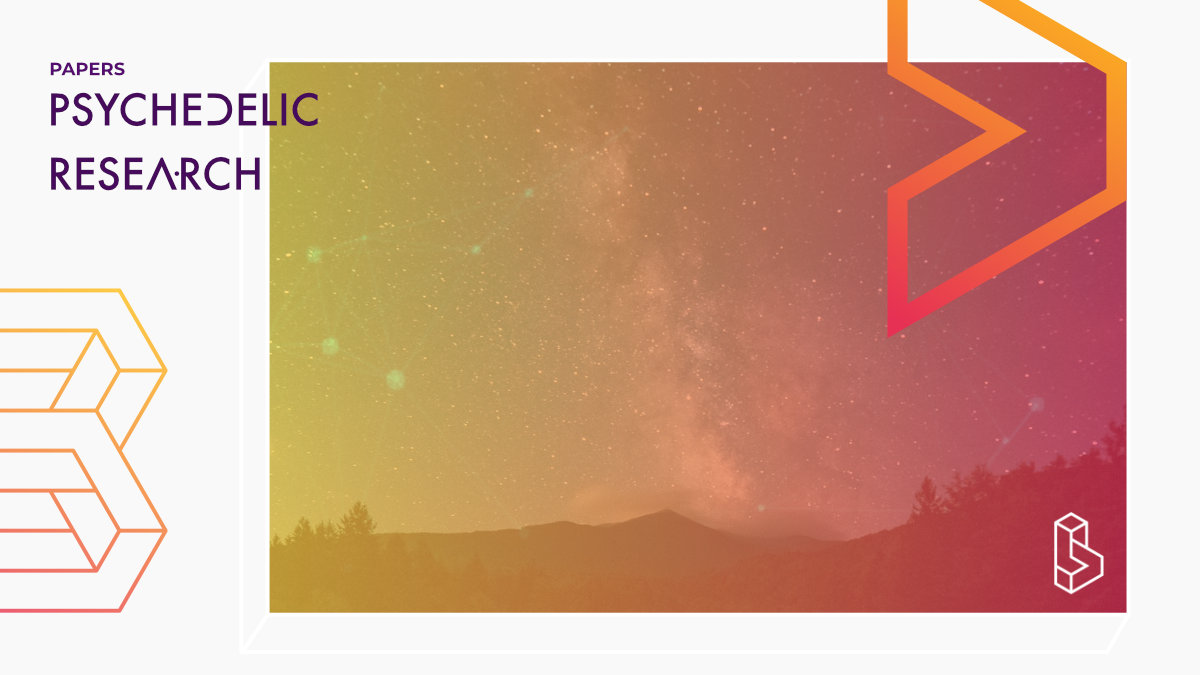This single-blind study (n=8) provides the first report of the positive correlation between the intensity of psychedelic effects, cerebral occupancy of the 5-HT2A receptor, and plasma psilocybin levels in humans after a single dose of psilocybin (3-30mg).
Abstract
“The main psychedelic component of magic mushrooms is psilocybin, which shows promise as a treatment for depression and other mental disorders. Psychedelic effects are believed to emerge through the stimulation of serotonin 2A receptors (5-HT2ARs) by psilocybin’s active metabolite, psilocin. We here report for the first time the relationship between the intensity of psychedelic effects, cerebral 5-HT2AR occupancy and plasma levels of psilocin in humans. Eight healthy volunteers underwent positron emission tomography (PET) scans with the 5-HT2AR agonist radioligand [11C]Cimbi-36: one at baseline and one or two additional scans on the same day after a single oral intake of psilocybin (3–30 mg). 5-HT2AR occupancy was calculated as the per cent change in cerebral 5-HT2AR binding relative to baseline. Subjective psychedelic intensity and plasma psilocin levels were measured during the scans. Relations between subjective intensity, 5-HT2AR occupancy, and plasma psilocin levels were modelled using non-linear regression. Psilocybin intake resulted in dose-related 5-HT2AR occupancies up to 72%; plasma psilocin levels and 5-HT2AR occupancy conformed to a single-site binding model. The subjective intensity was correlated with both 5-HT2AR occupancy and psilocin levels as well as questionnaire scores. We report for the first time that intake of psilocybin leads to significant 5-HT2AR occupancy in the human brain and that both psilocin plasma levels and 5-HT2AR occupancy are closely associated with subjective intensity ratings, strongly supporting that stimulation of 5-HT2AR is a key determinant for the psychedelic experience. Important for clinical studies, psilocin time-concentration curves varied, but psilocin levels were closely associated with the psychedelic experience.”
Authors: Martin K. Madsen, Patrick M. Fisher, Daniel Burmester, Agnete Dyssegaard, Dea S. Stenbæk, Sara Kristiansen, Sys S. Johansen, Sczabolz Lehel, Kristian Linnet, Claus Svarer, David Erritzoe, Brice Ozenne & Gitte M. Knudsen
Study details
Compounds studied
Psilocybin
Topics studied
Neuroscience
Study characteristics
Original
Single-Blind
Participants
8
Humans
Authors
Authors associated with this publication with profiles on Blossom
Gitte KnudsenGitte Moos Knudsen is the Chair Professor at the Neurology and Neurobiology Research Unit, Copenhagen University Hospital, and director of the Center for Experimental Medicine Neuropharmacology (NeuroPharm).
Institutes
Institutes associated with this publication
University of CopenhagenThe Neurobiology Research Unit (NRU) at Copenhagen University Hospital have been carrying clinical and preclinical research with psychedelics since 2017.
Compound Details
The psychedelics given at which dose and how many times
Psilocybin 3 - 30mg | 1x
Linked Research Papers
Notable research papers that build on or are influenced by this paper
Subacute effects of a single dose of psilocybin on biomarkers of inflammation in healthy humans: An open-label preliminary investigationThis open-label study (n=16) assessed the effects of a single dose of psilocybin (15mg/70kg) on biomarkers of inflammation in healthy participants. Blood samples before and one day after the administration revealed that psilocybin did not significantly impact any of the selected biomarkers.
Lasting increases in trait mindfulness after psilocybin correlate positively with the mystical-type experience in healthy individuals
This open-label study (n=39) assessed the association between psilocybin lasting increases in trait mindfulness and the mystical-type experience using the Mystical Experience Questionnaire (MEQ). The MEQ was administered after psilocybin sessions (16-22mg/70kg), and mindfulness was measured three months post-session using the Mindful Attention and Awareness Scale (MAAS). MAAS score was significantly increased at the 3-month follow-up. It was positively associated with the MEQ score (p = 0.035), indicating that the phenomenology of the psilocybin experience induces a shift toward mindful living.
Psychedelic effects of psilocybin correlate with serotonin 2A receptor occupancy and plasma psilocin levels
This single-blind study (n=8) provides the first report of the positive correlation between the intensity of psychedelic effects, cerebral occupancy of the 5-HT2A receptor, and plasma psilocybin levels in humans after a single dose of psilocybin (3-30mg).

